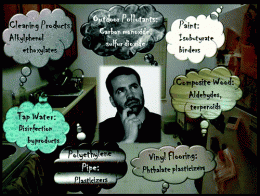The search for a rapid, non-invasive way to determine whether people have been exposed to potentially toxic substances in their workplaces, homes and elsewhere in the environment has led scientists to a technology that literally takes a person's breath away. Their report identifying exhaled breath as an ideal indicator of such exposure appears in ACS' Environmental Science & Technology.
Andrea M. Dietrich, Masoud Agah, and their students Heather Vereb and Bassam Alfeeli explain that scientists have known since the late 1970s that exhaled breath contains traces of any potentially toxic substances that people may have inhaled. Research has shown that those amounts are an accurate reflection of the levels that exist in a person's blood. Those advances have positioned exhaled breath as the ideal substance to use in rapid, non-invasive, simple testing for human exposure to potentially harmful substances in the air. Sampling breath is less invasive than drawing blood, more convenient than taking urine samples and "shows promise as an inexpensive method with a fast turnaround time," they state.
The article describes how advances in microelectronics have helped position breath analysis for more extensive use in the 21st century. Equipment for analyzing substances in human breath that once had to be housed in laboratories, for instance, have shrunk to hand-held size. The technology can detect minute amounts of substances in the breath and do so quickly — offering the promise of helping limit human exposure and improve health.
More information: The Possibilities Will Take Your Breath Away: Breath Analysis for Assessing Environmental Exposure, Environ. Sci. Technol., Article ASAP. DOI: 10.1021/es202041j
Abstract
Human breath is the gaseous exchange with the blood and thus contains trace organic contaminants and metabolites representative of environmental doses. Sampling and analysis of gaseous components in human breath offers a noninvasive and quick means of qualitatively and quantitatively assessing internalized doses of environmental contaminants. Although the humid and complex nature of breath is a challenge for detection of part-per-trillion to part-per-billion concentrations of environmental contaminants, recent advances in chemical analysis and instrumentation are allowing determination of environmental exposure and disease detection.
Provided by American Chemical Society





















